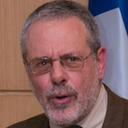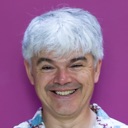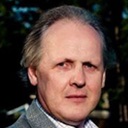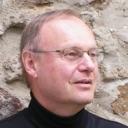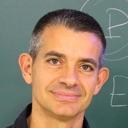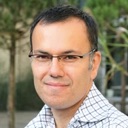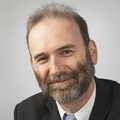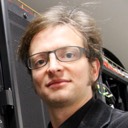Consortium
Chalmers University of Technology
Chalmers, founded in 1829, has leading research in the areas of life sciences, materials science, information technology, micro- and nanotechnology, environmental sciences and energy with 14000 people, including 2500 employees, work and study in Chalmers’s 17 departments. The Computer Science and Engineering Department is internationally strong in a wide range of areas critical for high-performance computing including algorithms, formal methods, software engineering, programming languages, distributed systems, security, dependable computing, computer architecture, and VLSI design. It engages about 150 research faculty members and PhD students. Chalmers also brings expertise in business innovation. Chalmers Center for Business Innovation (CBI) focuses on the development of management knowledge. One focus is on Business Prototyping; an innovation management methodology developed with Steve Blank of Stanford. Chalmers also hosts a School of Entrepreneurship and the Chalmers Innovation incubator that was elected as the 7th most successful university associated incubator worldwide in 2014.
Barcelona Supercomputing Center (BSC)
The Barcelona Supercomputing Center (BSC) is the Spanish national supercomputing facility recognised as a first-class research center in supercomputing and in scientific fields that demand it, such as Life and Earth Sciences and Engineering. BSC has over 350 staff from 41 countries engaged in multidisciplinary scientific collaboration and innovation. BSC hosts the PRACE distributed supercomputing infrastructure, is a founding member of ETP4HPC, and participates in HiPEAC, BDEC among others. The centre develops technologies for Exascale within e.g. Mont-Blanc and Mont-Blanc2, and the Human Brain Flagship project. BSC has established joint research centers with IBM, Intel, Microsoft, NVIDIA and Spanish oil company Repsol. BSC has participated in over eighty EC FP research projects. The Computer Sciences Department focuses on novel hardware and soft- ware technologies in HPC such as novel architectures, programming models and their implementation influencing e.g. OpenMP.
FORTH
FORTH is the premier research centre in Greece; with its 1200 people, it has excelled in all na- tional evaluations so far based on its internationally acclaimed excellence in basic and applied research and innovations. The Institute of Computer Science (ICS) of FORTH has 350 people in 8 Laboratories, one of which is CARV with 60 people. CARV, involved in this project, has made very important contributions in crucial sectors of HPC in scalable architectures, programming models, system software, languages, applications, tools. CARV has contributed to EUROSERVER, ASAP, NanoStreams, ENCORE, TEXT, DeSyRe, FASTER, IOLanes, STREAM, SARC, SIVSS, Unisix, MASC, ATHLOS, TransForm, I-Cores, Scalus, CumuloNimbo, CoherentPaaS, LeanBigData, BigStorage. FORTH is a founding member of HiPEAC and actively promotes commercialization of R& D results e.g. by providing services, licensing products to industrial partners and in spin-off companies and joint ventures.
University of Stuttgart
Founded in 1829, the foremost aim of the University of Stuttgart in research and teaching lies in the fields of engineering and the natural sciences. The university with its 140 institutes distributed over 10 faculties, 5,000 employees, and about 16,000 students has a strong impact in Germany’s traditional high-tech region. The High Performance Computing Center (HLRS) is one of the three national supercomputing centres in Germany and one of the three members of the GAUSS Centre for Supercomputing, offering services to users from academia and industry. HLRS has a world-leading experience in supporting users i parallel programming, in productivity tools, and in applying software engineering methods to HPC, and cloud computing. HLRS participates in a number of European collaborative supercomputing initiatives, such as PRACE, Distributed European and other infrastructure projects such as DORII, BonFIRE and HPC-Europa. Furthermore, HLRS is involved in CRESTA addressing thereby the exascale challenge.
INRIA
INRIA’s 4000 researchers strive to invent the digital technologies of the future, through 174 research project teams. Educated at leading international universities, they creatively integrate basic research with applied research and dedicate themselves to solving real problems, collaborating with the main players in public and private research in France and abroad and transferring innovations to high-tech companies: more than 100 startups have been born in INRIA. INRIA’s budget is typically above 250 million euros, 30% of which represented its own resources (contracts, grants). Two groups will represent INRIA: The PARKAS group has expertise in parallel programming languages, compiler construction, automatic parallelization, data-flow and synchronous languages, and applications to the design of high-performance computing systems. The ALF team focusses on future many-core systems. This issue is addressed through architecture, i.e. influencing the definition of the 2020’s many-core architecture, compiler, i.e. providing new code generation techniques for efficient execution on many-core architectures and performance prediction/guarantee, i.e. techniques predict/guarantee the response time of many-core architectures. Both teams have been part of numerous EU projects including EU FP7 SARC and MilePost. In addition, ALF’s André Seznec from ALF is the recipient of an ERC advanced research grant.
University of Manchester
The University of Manchester is one of the top research-led universities and can lay claim to 25 Nobel Prize winners amongst its current and former staff and students, including 4 current Nobel laureates. The School of Computer Science plays important roles in the two EU FET flagship projects (Graphene and Human Brain Project) and collaborates with the Square Kilometer Array (SKA) experiment headquartered in the university’s Jodrell Bank Observatory. The school also pioneered the development of the first stored program computer virtual memory (Atlas). The school retains strong activities in computer systems and engineering. The Advanced Processor Technologies group (APT) brings together more than 60 researchers (faculty, fellows, PhD students) and is one of the few centres of excellence able to design complex silicon as demonstrated by SpiNNaker; a one million ARM cores massively parallel architecture with many notable spin-off examples including ICL Goldrush Database server, Amulet processors (Low-power architectures) bought by ARM Ltd., Transitive Corporation (Virtualization and Binary Translation) bought by IBM and Silistix Ltd (Networks-on-Chip).
University of Augsburg
University of Augsburg will contribute to the project through the Systems and Networking laboratory headed by Prof. Ungerer. The chair is part of the Institute of Computer Science of the University of Augsburg. Institute of Computer Science comprises 12 professors, around 120 scientific collaborators and 1230 Computer Science students in Bachelor, Master and PhD programmes.
University of Augsburg has been investigating high-performance processor architecture concepts for many years. Prof. Ungerer was coordinator of the FP-7 ICT MERASA project (2007-2010) and of the FP7 parMERASA project (2011-2014). Moreover, he was involved in the FET TERAFLUX project (2010-2014) with fault tolerance on 100-cores research and receives project funding of Intel Corporation for ”Executing Parallel Safety-Critical Applications on COTS Processors by Exploiting Hardware Transactional Memory” targeting the Intel Haswell processor. Prof. Ungerer’s current research focus is on performance predictability, parallelization, and system-level software as well as reliability and safety issues. The team has collaboration with a a number of hardware companies: Infineon Technologies and Intel Corporation; automotive companies: Daimler AG, BMW Group, Audi AG, Bosch, Autoliv, and DENSO AUTOMOTIVE Deutschland; avionics: Airbus France, EADS Munich, and Honeywell International s.r.o., and machinery domain: Bauer Maschinen GmbH and Siemens Co.
ETH Zürich
ETH Zürich, one of the world-leading technical universities, manages and directs the Swiss National Supercomputing Center (CSCS) which hosts among others, one of the fastest supercomputers in the world (’Piz Daint’ #6 in the Top500, #5 in the Green500 list). The Integrated Systems Laboratory (IIS) of ETH Zürich, which will be directly involved in this project, has excellent connections to several supercomputing centers in Europe including CSCS, CINECA, and BSC. Prof. Luca Benini leads a energy/thermal efficient design of next generation HPC systems. He also leads the ERC-Advanced project on MULTITHERMAN project on thermal-aware and energy efficient computing systems since 2012. IIS employs more than 70 researchers and in addition to its HPC activities, has more than 25 years of experience in the design& test of energy efficient integrated systems. In this period more than 400 ASICs were designed and tested at the Institute.
EPFL
Founded in 1969, EPFL is among the world’s best institutions – in 2009, EPFL was ranked first in Europe and 15th worldwide in the Shanghai ranking of engineering, technology and computer science. Situated on the shores of Lake Geneva, the EPFL campus encompass 7000 students and 3000 staff that come together to study and work on the most exciting scientific and technological challenges of our time.The EcoCloud center at EPFL is an inter-disciplinary consortium of researchers to innovate data-centric IT paradigms of the future. The center targets technologies to bridge the gap between applications of massive data and their explosive demand on IT resources. The Ecocloud center has participated in the FP7 EuroCloud, bridging the technology gap for servers in the near term with ARM processors and 3D-integrated memory. The project introduced the Die-Stacked Scale-Out Processor architecture, which lays the foundation for the EuroServer FP7 prototype led by CEA, ARM and ST Microelectronics.
Technion
The Technion - Israel Institute of Technology, founded in 1912, offers degrees in science and engineering, and related fields such as architecture, medicine, industrial management and education. Technion is noted as a global pioneer in multidisciplinary research into fields including energy, nanotechnology and life science. It has 18 academic departments and 52 research centers and over 13,000 students. It has awarded over 95,000 degrees. Technion’s over 610 faculty members include three Nobel Laureates. Technion is a leader in many HPC related activities in Israel and collaborates with supercomputer centers in Europe, such as BSC (Barcelona Supercomputer centre) and Hasso Plattner Center for Scalable Computing. The Computer science department is ranked one of the top departments in worldwide; the Academic Ranking of World Universities for 2012. The ranking is based on several Excellency factors such as number of faculty and alumni winning Turing award, number of highly cited researchers, number of published papers, and percentage of papers published in top journals. Technion engages in innovation related activities with centers for innovations, such as Technion Knowledge Center for Innovation and The Bronica Entrepreneurship Center (BEC).
University of Edinburgh
The Institute for Computing Systems Architecture (ICSA) and the Edinburgh Parallel Computing Centre (EPCC) are two of the world’s foremost centres for research in computer systems and applications of high-performance computing, respectively. ICSA currently numbers 60 researchers (faculty, fellows, PhD students) with expertise in all aspects of parallel and embedded computer architecture, parallel programming models, compiler design and implementation, and advanced parallelisation tools. ICSA has been involved in numerous international projects, including EU FP7 SARC, Mile-Post and ERA. Since 2011 ICSA hosts the ARM Centre of Excellence. EPCC aims to accelerate the effective exploitation of high performance parallel computing systems throughout academia, industry and commerce. EPCC hosts the UK’s main HPC service, HECToR. The organisation has considerable experience of managing large, complex EU-funded projects including the successful NextGRID, EUTIST-IMV, and the ENACTS project. The centre is currently involved in HPC-Europa2, EU-DAT, PRACE, and CRESTA. EPCC runs the UK HPC service, ARCHER (Cray XC30) and the UK Research Data Facility (13.86PB disk, with an additional 19.5 PB of backup tape capacity).
RWTH Aachen University
RWTH Aachen University is Germany’s top-ranked technical university with approx. 40,000 students and is a member of the IDEA league. The Institute for Communication Technologies and Embedded Systems (ICE), being part of the RWTH Department of Electrical and Computer Engineering, is headed by Prof. R. Leupers and Prof. G. Ascheid. ICE performs research and development in different areas of computing technology, from HPC to communication systems. ICE maintains tight cooperations with semiconductor vendors, system houses, and EDA companies, and frequently provides industrial consulting services. ICE receives funds from the Deutsche Forschungs- gemeinschaft (DFG), e.g. via the Excellence Cluster UMIC (Ultra High Speed Mobile Information and Communication), a large scale next-generation mobile internet research program. Further funding is received from EU projects, in particular HPC-related projects like EURETILE and HiPEAC, as well as from industry partners. Several successful EDA spin-off companies originated from ICE, e.g. Cadis (acquired by Synopsys), Axys (acquired by ARM), and LISATek (acquired by CoWare, now Synopsys).
Ghent University
Ghent University is one of the leading institutions of higher education conducting research in the Low Countries. It offers high-quality, research-based education in all academic disciplines with over 46,000 students, and produces 11000 graduates per year. The Computer Systems Lab (CSL) of UGent’s engineering faculty will participate in this project. The Lab (50 researchers, including 8 faculty members) and conducts research on the hardware-software interface of programmable computing systems and spans the domains of system software, including compilers and operating and run-time systems, as well as computer architecture and micro-architecture component design. CSL has active collaborations with leading American research groups at the University of Texas at Austin, the University of Wisconsin-Madison, the University of Arizona, the University of California, San Diego, IBM T.J. Watson.






